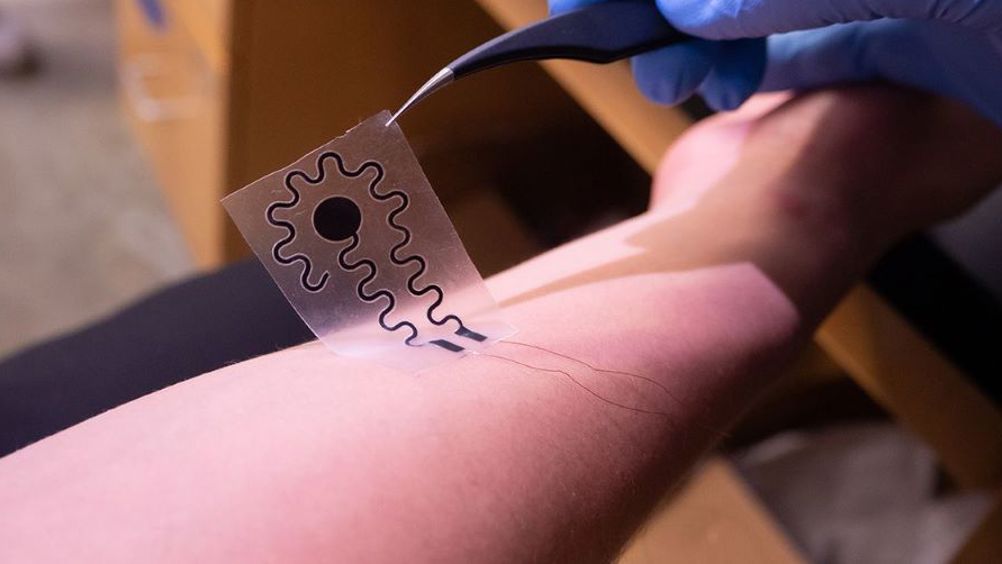Stretchable electrode recreates sensations on skin
In an advance for haptic technologies, researchers have developed a soft, stretchy electronic device capable of simulating the feeling of pressure or vibration when worn on the skin.

Led by the University of California San Diego (UCSD), the team’s device is said to reproduce a more varied and realistic range of touch sensations. Their findings are detailed in Science Robotics.
The device consists of a soft, stretchable electrode attached to a silicone patch and can be worn like a sticker on the fingertip or forearm. The electrode is connected to an external power source via wires. By sending a mild electrical current through the skin, the device can produce sensations of pressure or vibration depending on the signal’s frequency.
In a statement, Rachel Blau, a nano engineering postdoctoral researcher at the UC San Diego Jacobs School of Engineering, said: “Our goal is to create a wearable system that can deliver a wide gamut of touch sensations using electrical signals - without causing pain for the wearer.”
According to the UCSD, existing technologies that recreate a sense of touch through electrical stimulation often induce pain due to the use of rigid metal electrodes that do not conform well to the skin. The air gaps between these electrodes and the skin can result in painful electrical currents.
Register now to continue reading
Thanks for visiting The Engineer. You’ve now reached your monthly limit of news stories. Register for free to unlock unlimited access to all of our news coverage, as well as premium content including opinion, in-depth features and special reports.
Benefits of registering
-
In-depth insights and coverage of key emerging trends
-
Unrestricted access to special reports throughout the year
-
Daily technology news delivered straight to your inbox










Water Sector Talent Exodus Could Cripple The Sector
Maybe if things are essential for the running of a country and we want to pay a fair price we should be running these utilities on a not for profit...